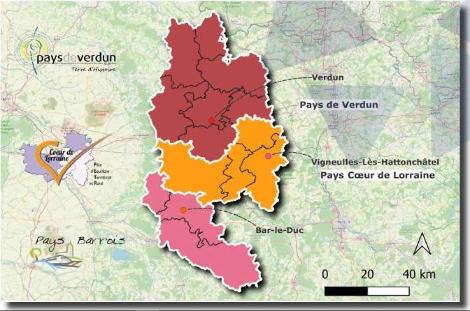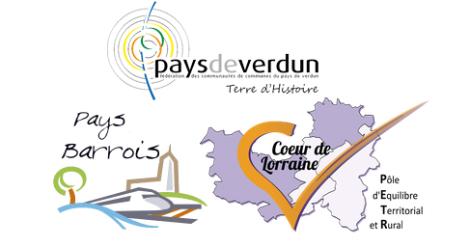Cooperating for mobility in Meuse - the Barrois, Cœur de Lorraine and Verdun regions
enero 2023
Association Nationale des Pôles territoriaux et des Pays (ANPP - Territoires de projet)
The PETR, a flexible structure for local development, adapts to its territory by building on the strengths of its members. In Meuse, the three PETRs (Pays Barrois, Pays Coeur de Lorraine and Pays de Verdun) have a combined population of around 165,000, spread across 14 EPCIs. The geographical location of these PETRs has a number of advantages, including the Belgian and Luxembourg borders, as well as the TGV station linking Paris to Gare de l’Est. The car is the dominant mode of transport in the region, with a high level of car ownership. In response to this situation, the Pays Barrois PETR has been involved in a car-sharing platform with Mobicoop since 2010, but due to a lack of communication, the solution has not been popular with local residents. A planning document in the form of a mobility scheme for the Pays Barrois was drawn up between 2016 and 2018. The Coeur de Lorraine mobility study was carried out in 2018, while the Pays de Verdun does not have a master plan. It is important to note that the PETRs do not have AOM powers. 12 EPCIs have it, while two do not.
Para descargar: enquete-mobilite-1.pdf (1,9 MiB)

Making cooperation a reality
A post has been created to ensure synergy between the three PETRs. As Julien DIDRY, Vice-President of the General Council and Chairman of the Pays de Verdun PETR, points out, the three PETRs have everything to gain by working together and building on each other’s strengths and initiatives, such as the Pays de Verdun’s digital strategy. Local development also involves renovating housing and working on the region’s image, to counteract the image of a neglected region, and mobility. The pitfall would be to work in silos. The PETR works on the scale of a catchment area, and mobility issues need to be dealt with at this level. By bringing together the three PETRs, the catchment area is even wider, so that the needs of all the inhabitants can be taken into account. What’s more, pooling resources provides greater leverage, particularly in financial terms. This has made it possible to recruit an FTE to coordinate the three PETRs.
By proposing a network that will bring together all the mobility solutions of the three PETRs - called Roul’en’Meuse - this territorial cooperation is creating its own brand and setting itself apart. The brand will make it easier to communicate with local residents and to get them on board. Choosing its own car-sharing platform will save money and build on the strengths of the PETRs: their in-depth knowledge of the region and their ability to communicate. The governance of this cooperation is illustrated by a number of meetings, such as the Inter PETR Copil and the PETR technical committees, which take place every 15 days. The steering committee brings together the chairmen and vice-chairmen responsible for mobility. In addition, an extended steering committee brings together the department, the region, the EPCIs, ADEME, etc. Funding for the post linking the PETRs is provided by the EAFRD, while the Roul’en’Meuse platform has received funding as a prizewinner in the TENMOD 2022 call for expressions of interest. This cooperation is the fruit of a shared political will that did not wait for the law to be established. The engineering to support this inter-PETR project was one of the difficulties, but the recruitment of a person dedicated to monitoring the project enabled it to become operational. Other areas of inter-territorial cooperation? Since the issue of mobility has helped to mobilise the players around this cooperation between the three PETRs, it is interesting to ask how other issues could be the subject of future cooperation. This could be done on other issues that require time, reflection and a cross-cutting approach, such as energy renovation, for example. Even if the future of the PETR in the institutional landscape is still uncertain, its role in coordinating, prospecting and bringing together players is a major asset, in the image of this inter-territorial cooperation. As relations with the EPCIs are good, the PETRs can support and promote issues such as mobility on behalf of their member communities. The PETR stands out for its vision and weight. With three PETRs, cooperation carries more weight with the institutions.
